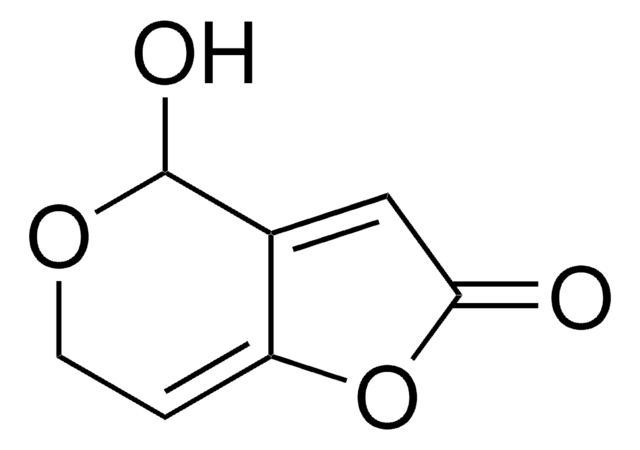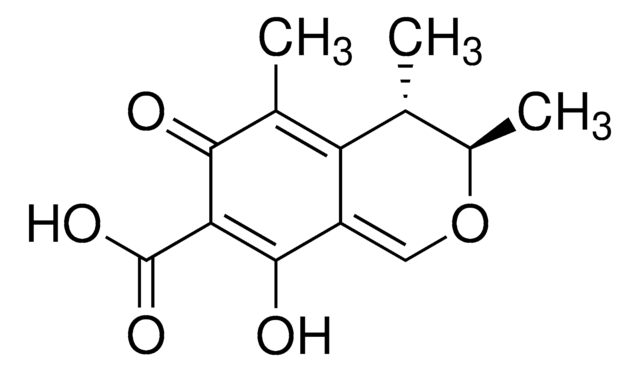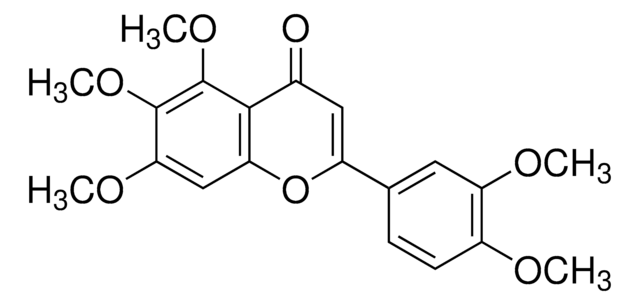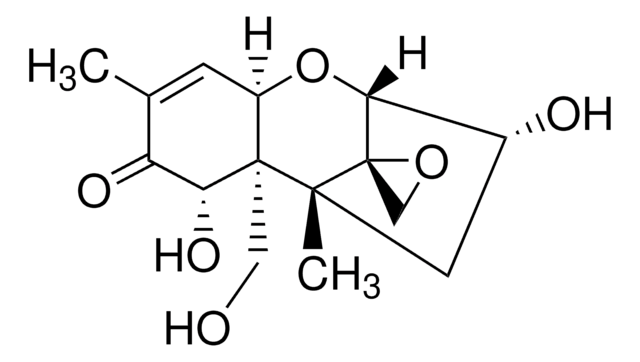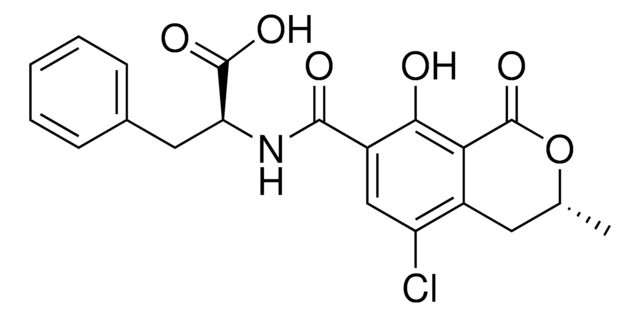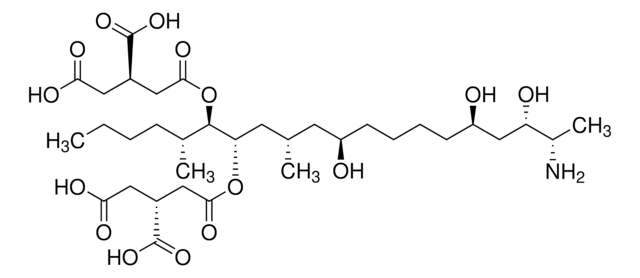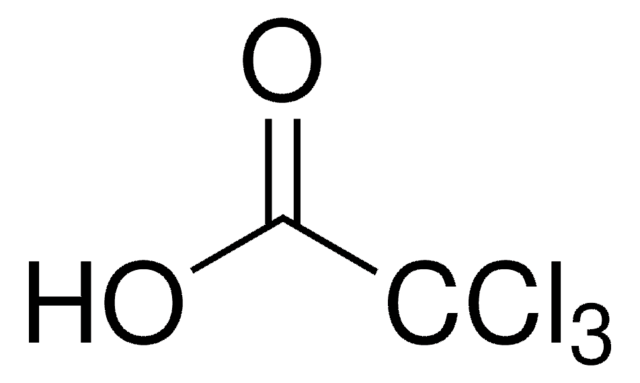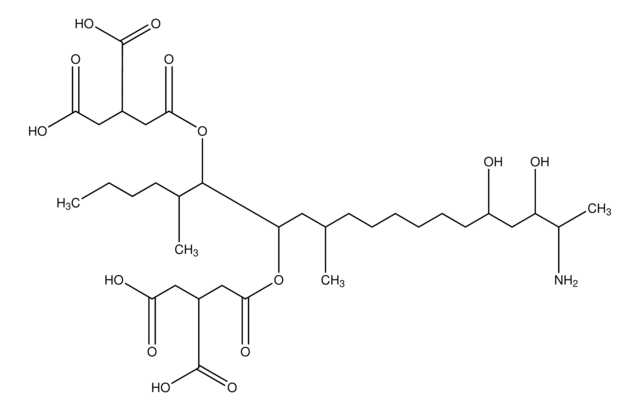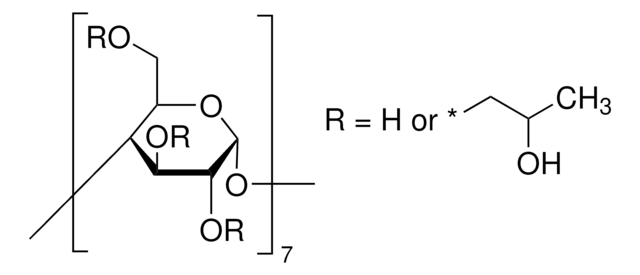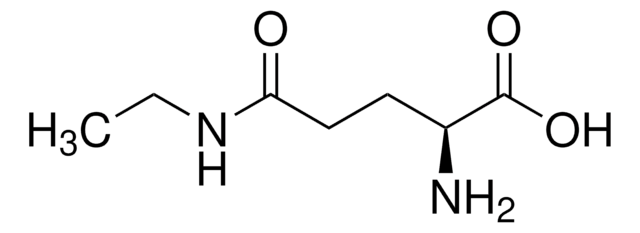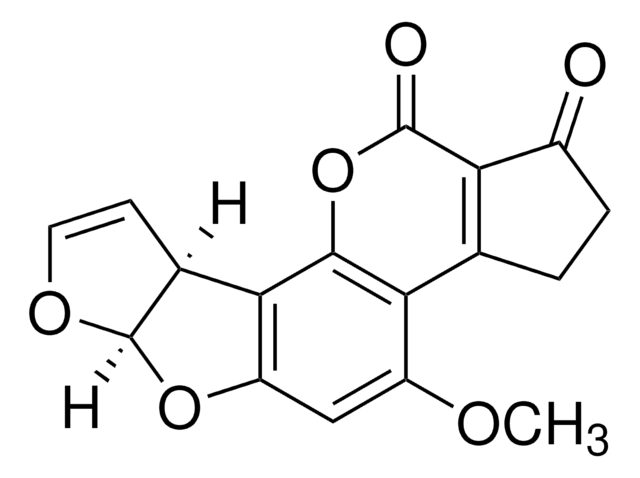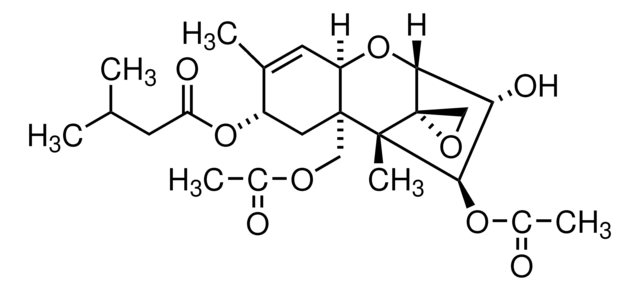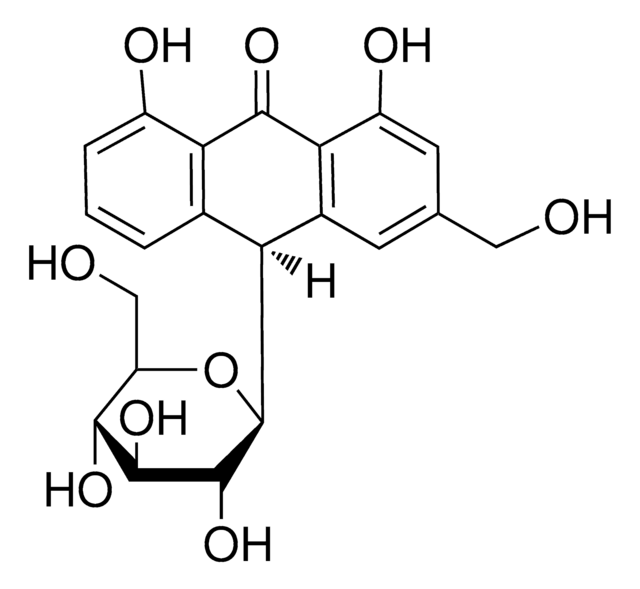C1017
Citrinin
from Penicillium citrinum, ≥98% (HPLC), powder, mycotoxin
Synonym(e):
4,6-Dihydro-8-hydroxy-3,4,5-trimethyl-6-oxo-3H-2-benzopyran-7-carbonsäure
About This Item
Empfohlene Produkte
product name
Citrinin, from Penicillium citrinum, ≥98% (HPLC)
Biologische Quelle
Penicillium citrinum
Qualitätsniveau
Assay
≥98% (HPLC)
Form
powder
Lagertemp.
2-8°C
SMILES String
C[C@H]1OC=C2C(O)=C(C(O)=O)C(=O)C(C)=C2[C@@H]1C
InChI
1S/C13H14O5/c1-5-7(3)18-4-8-9(5)6(2)11(14)10(12(8)15)13(16)17/h4-5,7,15H,1-3H3,(H,16,17)/t5-,7-/m1/s1
InChIKey
CQIUKKVOEOPUDV-IYSWYEEDSA-N
Suchen Sie nach ähnlichen Produkten? Aufrufen Leitfaden zum Produktvergleich
Allgemeine Beschreibung
Anwendung
- a standard for calibration curve preparation for citrinin quantification Monascus purpureus ATCC 36928
- an internal standard in thin layer chromatography (TLC) for characterizing the citrinin from Aspergillus and Penicillium strains
- standard to characterize citrinin for rotten apples TLC
Biochem./physiol. Wirkung
Signalwort
Danger
H-Sätze
Gefahreneinstufungen
Acute Tox. 3 Dermal - Acute Tox. 3 Inhalation - Acute Tox. 3 Oral - Carc. 2
WGK
WGK 3
Persönliche Schutzausrüstung
Eyeshields, Faceshields, Gloves, type P3 (EN 143) respirator cartridges
Analysenzertifikate (COA)
Suchen Sie nach Analysenzertifikate (COA), indem Sie die Lot-/Chargennummer des Produkts eingeben. Lot- und Chargennummern sind auf dem Produktetikett hinter den Wörtern ‘Lot’ oder ‘Batch’ (Lot oder Charge) zu finden.
Besitzen Sie dieses Produkt bereits?
In der Dokumentenbibliothek finden Sie die Dokumentation zu den Produkten, die Sie kürzlich erworben haben.
Kunden haben sich ebenfalls angesehen
Unser Team von Wissenschaftlern verfügt über Erfahrung in allen Forschungsbereichen einschließlich Life Science, Materialwissenschaften, chemischer Synthese, Chromatographie, Analytik und vielen mehr..
Setzen Sie sich mit dem technischen Dienst in Verbindung.